Fixed internet performance: Bouygues Telecom poised to win over Free


It is the subscribers of the Bouygues Telecom operator who benefit from the best performances on fixed Internet (FTTH, xDSL) for the first half of 2023, according to the nPerf barometer.
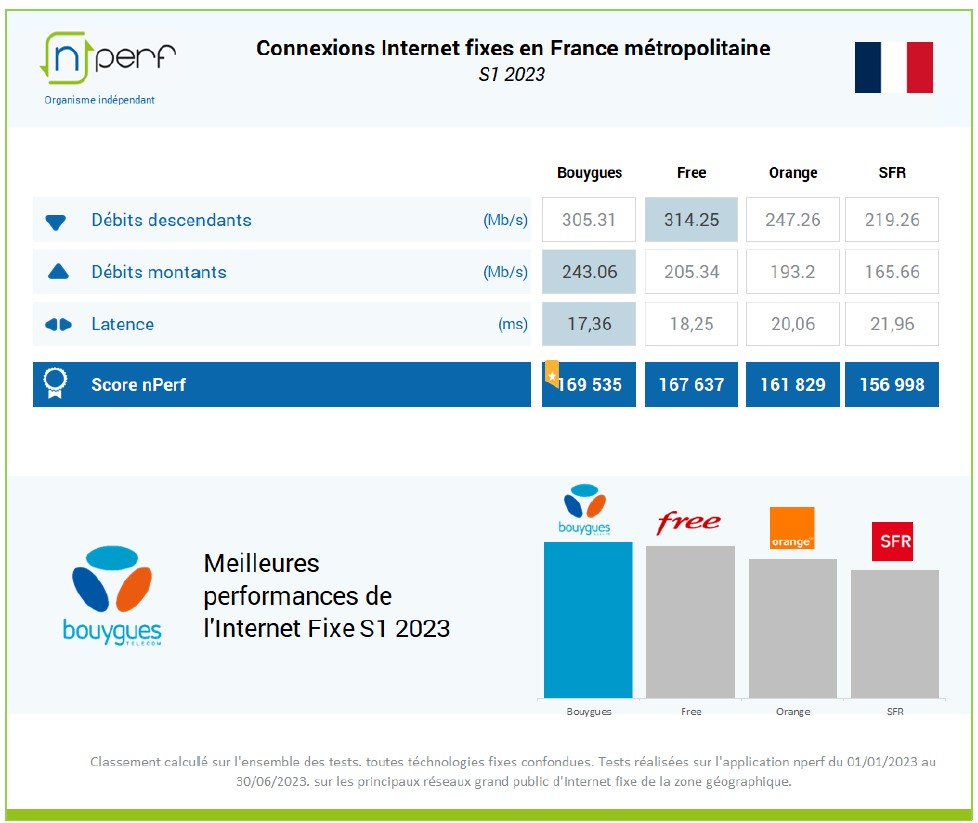
These are the subscribers of
the Bouygues Telecom operator who benefit from the best performance
on the fixed Internet (FTTH, xDSL) for the first half of 2023, according to
the nPerf barometer.
Bouygues Telecom has been growing steadily since the beginning of the year, nPerf notes. “On average, it offers the best uplink speed and the best latency over the quarter. Although Free still holds the first place on the downlink speed on average over the quarter, Bouygues Telecom finished strongly by outperforming its competitor in the months of May and June” specifies nPerf.
And this dynamic is part of the long term. This trend, which can be found on broadband as well as superfast broadband, dates back to 2021.
“Free’s lead is melting away”
Enough to worry the other operators. “Free’s lead on the downlink speed is melting and Bouygues Telecom is even managing to take the lead over the last month by offering on average to its very high-speed customers, a downlink speed approaching 400 Mb/ s” specifies nPerf.
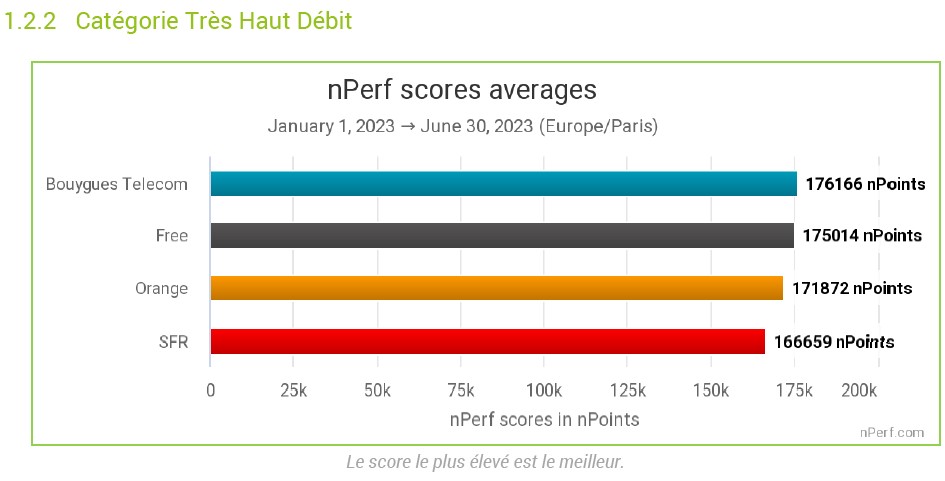
Bouygues
Telecom and de Free obtained, during the first half of 2023, the
best nPerf score on the performance of connections “Very High
Flow”.
In 2022, it was Free that positioned itself at the top of Superfast Broadband. But Bouygues Telecom’s efforts have since paid off. Bouygues Telecom is the leader or co-leader in two indicators, uplink throughput and latency and surpasses Free in the month of June in downlink throughput.
In the end, Bouygues Telecom and Free have a statistically similar nPerf score in the high-tech segment.
On the broadband side, Bouygues Telecom is also changing the game
On the broadband side, after several fairly stable semesters, Bouygues Telecom is changing the situation and is also taking the first place in the ranking.
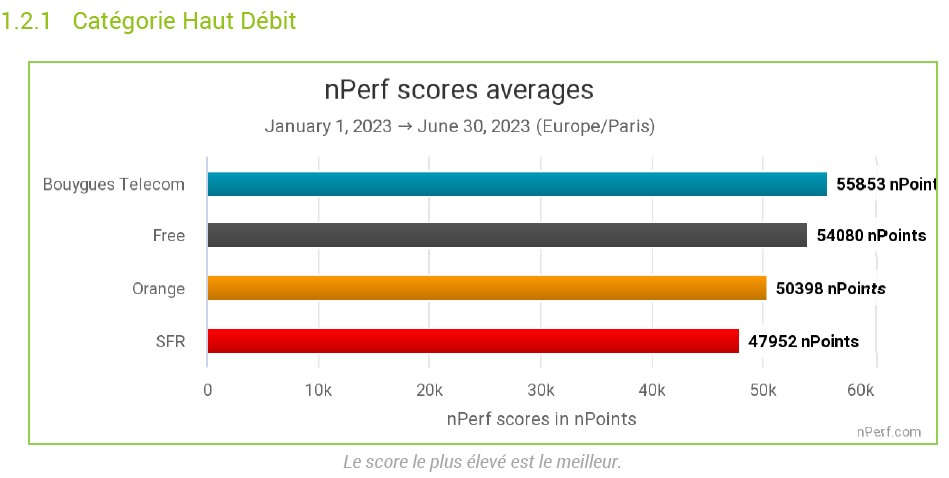
Bouygues subscribers
Telecom have obtained, during the first half of 2023, the best
nPerf scores on the performance of “High-speed” connections.
Bouygues Telecom is also playing an equal game here with Free on the downlink speed, but takes a clear advantage on the latency by operating a decrease of more than 5ms compared to the same half last year.
Free keeps a clear lead on the rising debit
Free for its part keeps a clear lead and its first place on the rising debit. Orange and SFR are closing the market with performances very similar to those observed last year.
Note that there is also movement at the bottom of the ranking. “SFR has been able to improve the quality of its network, offering its customers higher throughput and latency compared to the previous year,” notes nPerf. A growth that allows it to surpass Orange at the end of the semester.
Improvement of up and down bitrates
Moreover, the study specifies that the French surfed with an average downlink speed of 271 Mb / s, compared to the 225 Mb / s of the first half of 2022, that is to say a growth of approximately + 20%.

It is the subscribers of Free who have benefited this semester from the best downlink speed, all fixed internet technologies combined.
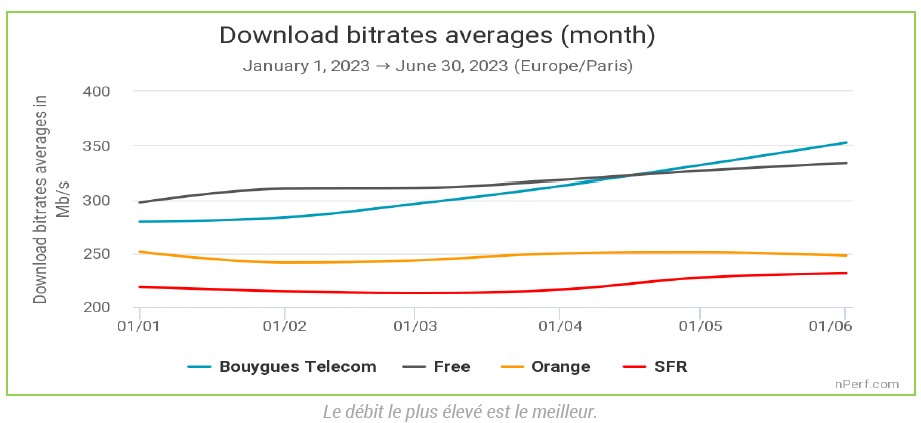
Its increase of + 19% (+ 50 Mb / s) since the first half of 2023 reinforces it in its leadership role. But Bouygues Telecom, second, is catching up with growth twice as fast as that of free (36%), bringing it closer to its main competitor. Orange and SFR keep their respective third and fourth positions from last year.
The incoming flow is also growing. Its average speed is up to 197 Mb / s, an increase of 23% compared to 2022, with increases ranging from 23 and 89 Mb / s additional, according to operators.
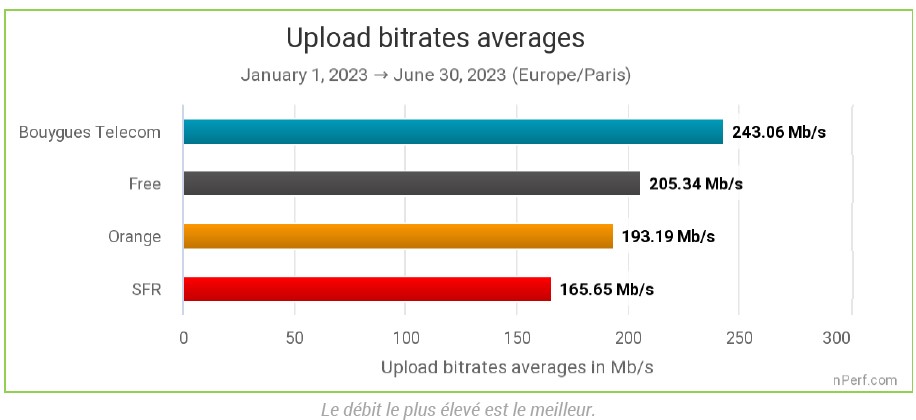
Bouygues Telecom subscribers benefited from the best rising speed, all fixed Internet technologies combined.
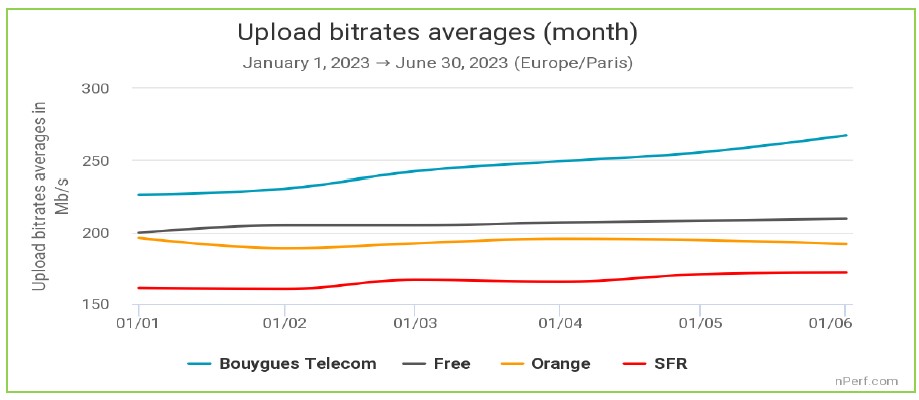
The expansion of the fleet of domestic offers theoretically offering 10 Gb / s significantly contribute to this improvement (read: GPON, 10G-EPON or XGS-PON, a definition in one click).
Latency that is also improving
Finally, it should be noted that the average latency was 20 ms over the period, an increase of 10% compared to 2022.
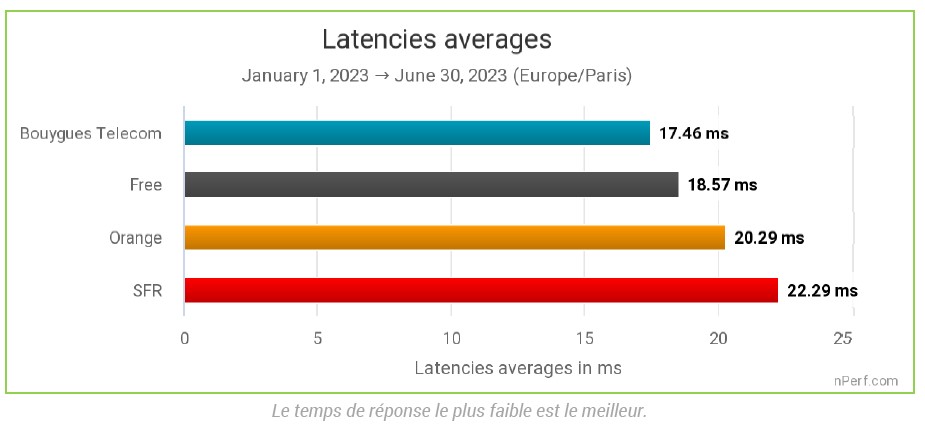
Bouygues Telecom subscribers benefited from the best response time, all fixed Internet technologies combined.
Bouygues Telecom has significantly reduced the latency on its network in particular thanks to the sharp decrease observed on Very High Speed broadband. SFR although last on this indicator also sees its latency decrease during this semester, unlike Orange.
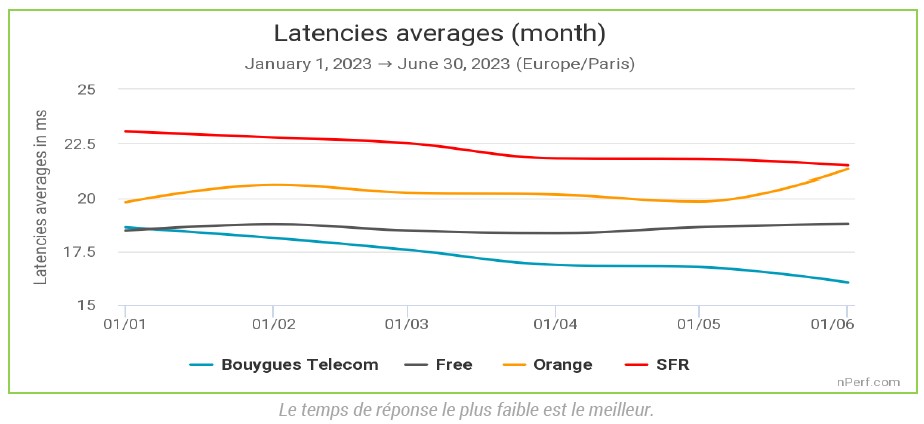
The semi-annual barometer of fixed connections in metropolitan France
based on the tests carried out during the period from January 1, 2023 to
june 30, 2023 by nPerf. 1,951,930 connection tests have been performed for this
realized.








